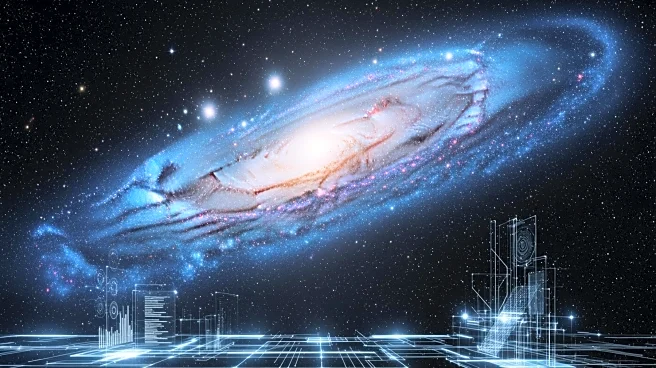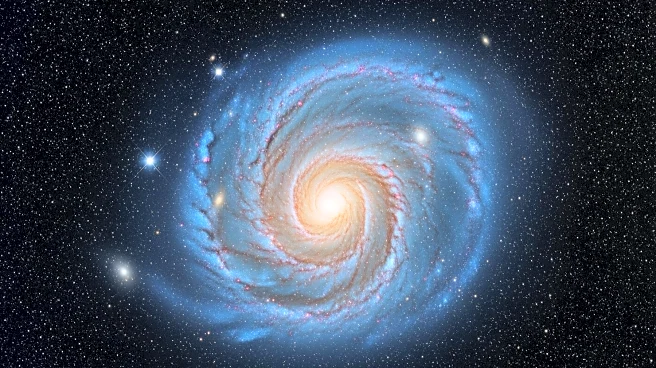What's Happening?
Researchers have performed the world's first Milky Way simulation representing over 100 billion stars using 7 million CPU cores. This simulation, achieved through a combination of artificial intelligence
and numerical simulations, represents a significant advancement in astrophysics. The study, published in the Proceedings of the International Conference for High Performance Computing, demonstrates the ability to model galaxy evolution with high star-level resolution. The simulation addresses challenges in modeling large galaxies by integrating a deep learning surrogate model with physical simulations, allowing for detailed observation of phenomena like supernova explosions.
Why It's Important?
This simulation marks a major milestone in astrophysics, providing a tool to test theories of galactic formation and evolution against real observations. The integration of AI with high-performance computing offers a new approach to tackling complex multi-scale problems, potentially transforming fields like climate science and weather modeling. The ability to simulate the Milky Way at such a detailed level could lead to new insights into the formation of elements and the evolution of galaxies, contributing to our understanding of the universe and the origins of life.
What's Next?
The research team plans to continue refining their simulation techniques, potentially applying their AI-accelerated approach to other scientific fields. The success of this simulation may inspire further collaborations between astrophysicists and computer scientists, leading to advancements in both fields. The methodology could be adapted to simulate other complex systems, such as climate patterns or ocean dynamics, offering new tools for scientific discovery. The ongoing development of these simulations will likely attract interest from the scientific community, driving innovation in computational science.
Beyond the Headlines
The use of AI in scientific simulations raises questions about the role of machine learning in research and discovery. As AI becomes more integrated into scientific processes, discussions about its limitations and ethical implications are likely to emerge. The energy consumption of supercomputers also presents challenges, prompting considerations of sustainable computing practices. The ability to simulate the Milky Way at such a detailed level may lead to philosophical questions about the nature of the universe and our place within it, as researchers gain new insights into the cosmos.











